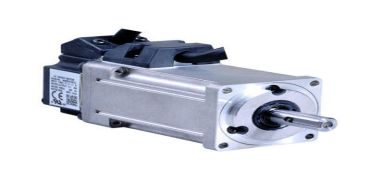Views: 0 Author: Site Editor Publish Time: 2021-09-30 Origin: Site








There are several main differences between Ac motors and DC motors, except for the obvious one that is related to the way these components are powered. The following briefly introduces each type of motor, and then outlines the differences between them.

Introduction to ac motor
Introduction to dc motor
What is the difference between AC and DC motors?
What is an Ac motor?
An Ac motor is an electromechanical device that can convert electrical energy in the form of AC voltage and current into mechanical energy. There are different varieties of Ac motors, which can be characterized by induction motors (asynchronous motors) or synchronous motors, and include stators and rotors. Induction motors can be single-phase or multi-phase, and synchronous motors include reluctance motors and hysteresis motors. You can also read more online to learn more about each type of motor.
What is a DC motor?
A DC motor can convert the electrical energy supplied to it in the form of direct current into mechanical rotational energy. The same device can be used in reverse to generate direct current through the rotation of the motor shaft. When used in this way, the device will act as a generator. There are several main types of DC motors. These include permanent magnet DC motors, series wound DC motors, parallel DC motors, composite DC motors and brushless DC motors.
Both AC and DC motors generate mechanical energy in the form of a rotating motor shaft, but there are some major differences:
1. input power
Ac motors are operated by inputting electrical signals. The input electrical signals are alternating current and voltage. As the input alternating current waveform completes a cycle, the amplitude and direction will change. Ac motors can be operated by a single-phase power supply or by a multi-phase power supply with multiple voltage inputs. The phase angle difference between these voltage inputs is usually 120 o or 2π/3 radians in the case of a three-phase power supply.). A DC motor is powered by a unidirectional current (a current that does not change direction over time) provided by a DC power supply. The universal importance of AC power means that when using DC motors (for example, using AC-DC converters or DC power supplies), conversion to DC power may be necessary.
2. magnetic field
In a multi-phase Ac motor, when alternating current is supplied to the stator coil, a rotating magnetic field or RMF is generated, which generates EMF in the rotor coil according to Faraday's law of induction. This EMF generates a current in the rotor and applies a net torque to rotate it, and it also generates a rotating magnetic field. Induction motors exhibit a phenomenon called slip, in which the speed of the rotor (N r) is less than the synchronous speed of the rotating magnetic field of the stator (N s). In a DC motor, a permanent magnet or a set of excitation coils will produce a non-rotating magnetic field. Current is supplied to the coil of the armature, which causes the armature to rotate.
3. Direct and indirect connection design
For Ac motors, power is supplied to the stator coils by directly connecting to a multi-phase AC power source, which is all that is needed to generate the rotation of the rotor. The principle of electromagnetic induction can generate current in the rotor without direct electrical connection.
For DC motors, it is necessary to provide current to both the fixed excitation coil (unless permanent magnets are used) and the armature. To this end, a brushed DC motor uses a set of spring-loaded carbon brushes, which are pressed on the commutator ring. When the armature rotates, the commutator ring delivers current to the armature coil and the excitation coil. Depending on whether the field coil is connected in parallel with the armature coil (parallel motor) or in series with the armature coil (series wound motor), the resulting DC motor configuration will exhibit different performance characteristics.
